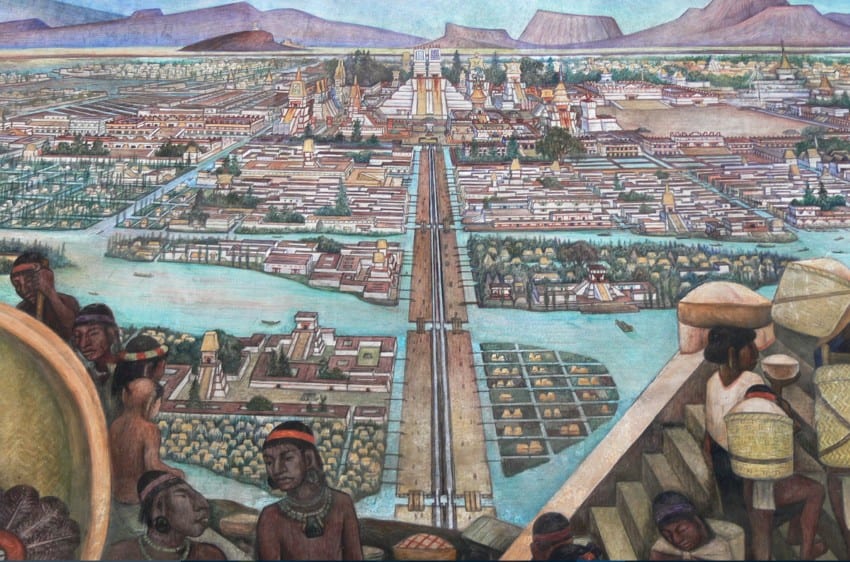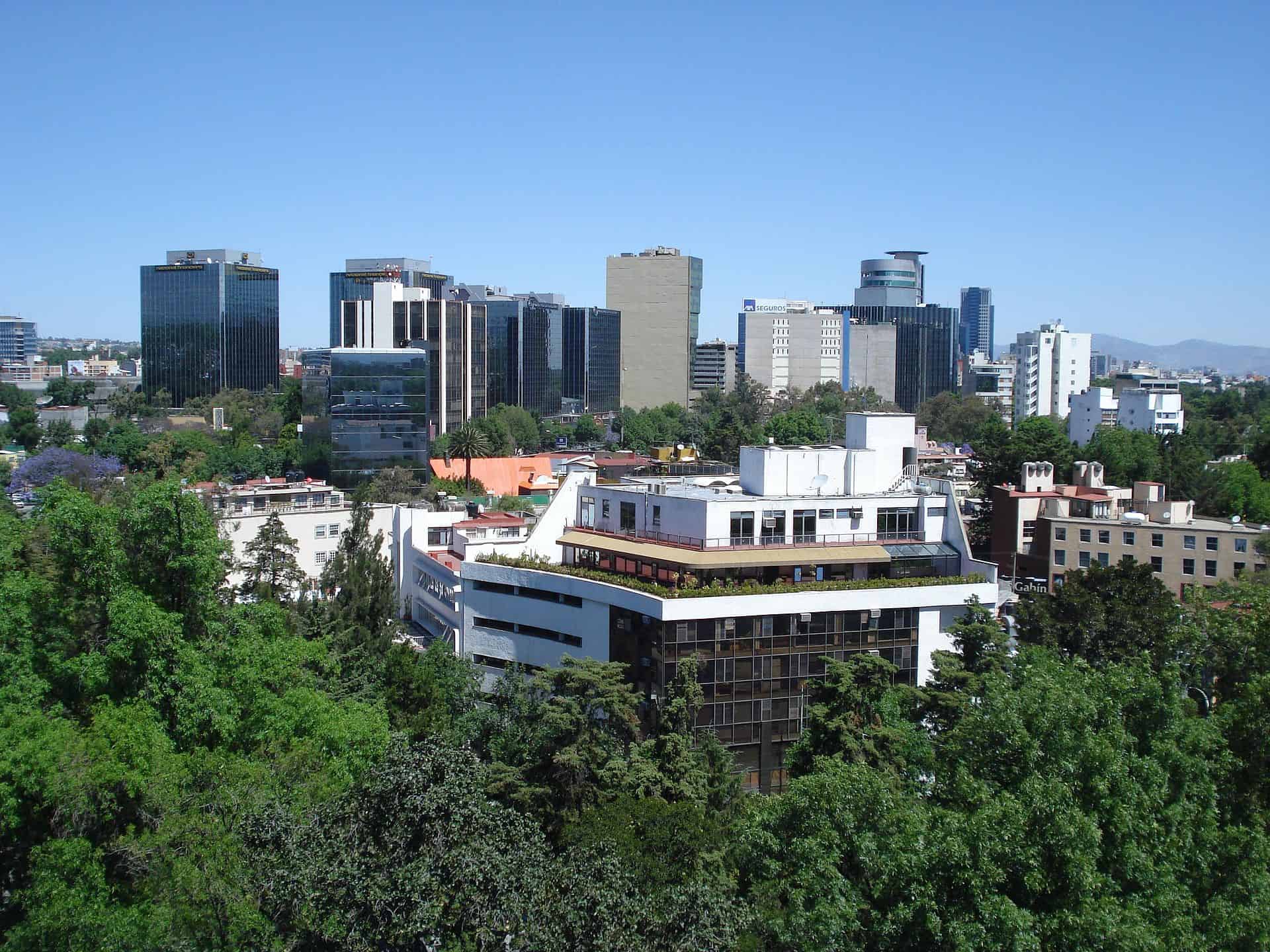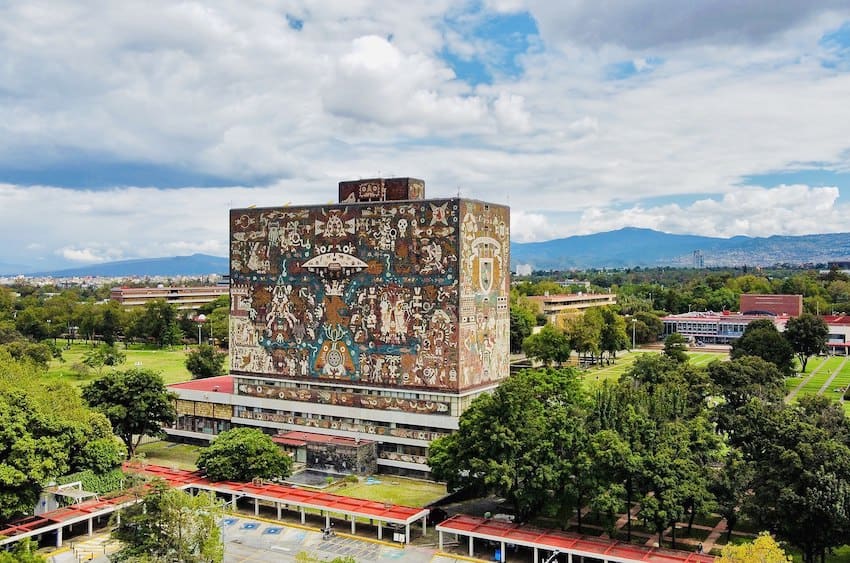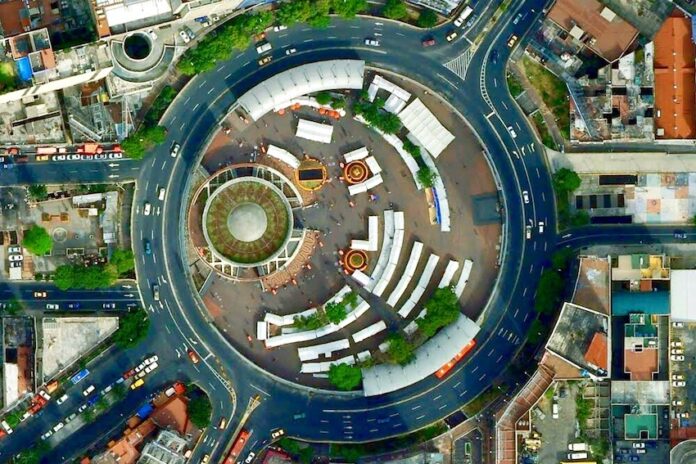On a recent Metrobus ride up Insurgentes Avenue, I was struck by how dramatically the scenery shifted from block to block. It felt as if I were passing through a series of distinct cities, each with its own character.
In many ways, I was: Mexico City’s sprawling nature creates a mosaic of enclaves, and it makes sense that the capital’s longest avenue (and one of the longest in the world) would cut through so many of them. At 28.8 kilometers (18 miles), Insurgentes is both the city’s most prominent north-south corridor and its backbone for public transportation. Its story is just as interesting.
Ancient origins and historical development

Avenida Insurgentes traces its roots to the Mexica (Aztec) era, as it passes through what was once Lake Texcoco and by the chinampas of Xochimilco. After the Spanish drained Lake Texcoco to prevent flooding, the original rural areas evolved into more modern corridors. Key segments of these colonial networks, such as Camino Nuevo a San Cosme (Santa María la Ribera), Avenida Veracruz (Roma) and Vía del Centenario (San Ángel), were eventually swallowed up by today’s Insurgentes.
The thoroughfare as we currently know it was completed in 1953, named for the insurgent army that fought for Mexican independence starting in 1810.
President Miguel Alemán played a major role in shaping Mexico’s longest urban road. His administration invested heavily in public works — completing University City (UNAM). He also completed the Multifamiliar Presidente Alemán, the first significant mass housing project in the country’s capital.
Beyond building construction, Alemán modernized the country’s highway system by commissioning new roads and bridges to support a rapidly growing population. Under his administration, the Mexico City airport was upgraded, further improving international connectivity.
With the 1968 Olympics came another wave of urbanization: the Metro was built, massive stadiums rose and major infrastructure in the city got a facelift. This included Insurgentes and the southern stretch of the avenue was widened and expanded to connect new sports venues like the University Olympic Stadium.
Public art sculptures were also added to Insurgentes at this time, for visual impact. A few remain to this day, including Señales” (Signals) by Ángela Gurría’ and “El Ancla” (The Anchor) by Willi Gutmann.
Insurgentes is also home to the city’s first Metrobús line, inaugurated in 2005. Chosen for its high passenger demand and strategic position, the Metrobús replaced hundreds of conventional buses with efficient Bus Rapid Transit (BRT) vehicles, now serving over 250,000 passengers each day.
Avenida Insurgentes’ geographical reach

Traversing a remarkable cross-section of Mexico City, Avenida Insurgentes begins in the northern section of Residencial Acueducto de Guadalupe and crosses through the following neighborhoods:
- Lindavista
- Guadalupe Insurgentes
- Tlatelolco
- Santa María la Ribera
- Buenavista
- Tabacalera
- San Rafael
- Cuauhtémoc
- Juárez
- Roma
- Condesa
- Del Valle
- Nápoles
- San Ángel
- Pedregal
The thoroughfare culminates in southern Tlalpan at the Monumento al Caminero. There are, as one might expect, a healthy handful of notable landmarks to see along the way. Should you travel the entire length of the avenue, you’d encounter several showstoppers, including two world records.
Notable landmarks and historical monuments
Starting with the recognizable Plaza de Toros México, located in Ciudad de los Deportes, is said to be the largest, and perhaps one of the most controversial, bullrings in the world. Continuing south to Nápoles, you won’t miss the World Trade Center Mexico City, one of the city’s tallest and most recognizable skyscrapers. A short distance from here is the striking Polyforum Cultural Siqueiros and its famous mural, “La Marcha de la Humanidad.” The bold masterpiece is widely regarded as the world’s largest, thanks to Mexican artist David Alfaro Siqueiros. Starting in the mid-1960s, his painting project eventually covered every interior wall and ceiling of the Polyforum’s Universal Forum, which spans over 8,000 square meters.
Further south in Extremaduras is Parque Hundido. Established in the 1930s, the park is famous for its sunken gardens and a brightly-colored floral clock. If you continue on a southern trajectory, you’ll come to the prominent facade of the Ollin Yoliztli Cultural Center, located in Isidro Fabela and known to be one of the city’s leading performing arts and educational centers. Finally, you’ll reach UNAM’s Ciudad Universitaria – both a UNESCO World Heritage Site and the main campus of Mexico’s National Autonomous University.

Modern cultural and urban significance
Avenida de los Insurgentes is a symbol of Mexico City’s growth, modernization and cultural dynamism. Its name commemorates the struggle for independence, and its development reflects the city’s transformation from a patchwork of country paths to one of the largest modern metropolises in the world. The avenue has witnessed major historical events, urban planning milestones and the daily life of millions of residents walking, cycling and riding to their next destination.
Unfortunately, like any major avenue, Insurgentes faces its challenges. Severe traffic congestion is an issue, with chronic traffic jams and slow travel speeds, especially during a rush hour that seemingly never ends. Despite public transportation improvements, congestion has only increased in recent years, leaving city developers scrambling to improve Insurgentes’ infrastructure. Moreover, many of its Metrobús stations and sidewalks show signs of critical wear and tear.
There are signs of improvement, and in September 2024, a major rehabilitation project revitalized the Glorieta de Insurgentes roundabout, one of the busiest transit hubs in the city. Workers added new LED lighting, expanded green spaces, removed graffiti and constructed a tourist police station.
Further upgrades are planned, including the construction of the 237-unit Skytown Insurgentes residential building near Paseo de la Reforma, though additional improvements may be paused as the city prepares for the FIFA World Cup.
Bethany Platanella is a travel planner and lifestyle writer based in Mexico City. She lives for the dopamine hit that comes directly after booking a plane ticket, exploring local markets, practicing yoga and munching on fresh tortillas. Sign up to receive her Sunday Love Letters to your inbox, peruse her blog, or follow her on Instagram.
